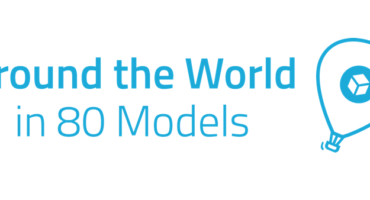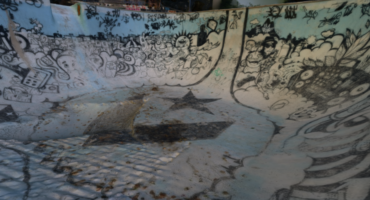Hop on board as we continue our journey Around the World in 80 Models! We began our itinerary at Sketchfab headquarters in New York and are working our way through Europe, Africa, Asia, Oceania, South America, and North America. To catch up on past destinations, check out the rest of the Around the World in 80 Models series.
This week we are moving from Afganistan to China where we meet up with the Minneapolis Institute of Art and their Chinese art collection.
Around the World in 80 Models: Chinese double wine vessel
Hello everyone – my name is Charles Walbridge, and I’m the Lead Collections Photographer at the Minneapolis Institute of Art, which we affectionately call Mia. Mia is an encyclopedic art museum in Minneapolis, Minnesota, USA. Our collection includes more than 89,000 objects, spanning about 20,000 years and representing the world’s diverse cultures across all continents.
Mia’s collection of Chinese archaic ritual bronzes is extensive, and contains objects from the Shang dynasty (c. 1600– c. 1046 BCE) to the Han dynasty (206 BCE–220 CE).
The Double Owl You wine vessel is from the late Shang period (12th century BCE) and shows intricate designs: two owls coalesced back to back form a vessel supported by short, stout legs. The domed lid represents the head of each bird with beaks and large, C-shaped horns. These motifs are cast against a ground of squared spirals throughout.
We scanned the Double Owl You in Mia’s photo studio using photogrammetry: we use a turntable and swing arm combination that helps us automate the hundreds of pictures we take of each object. This model was made from about 290 20-megapixel photographs with the object both right-side-up and inverted, and we use use photogrammetric scales (from Cultural Heritage Imaging, culturalheritageimaging.org) to track the scale of each object.
We build our models in Agisoft’s Photoscan and export them as OBJs; usually we don’t refine the models in any modeling programs before sending them to Sketchfab. I’m also learning ZBrush for cleaning up models, and some day soon we’d like to combine the models we’ve scanned with the SketchUp versions of our galleries that our exhibition team uses, so we can make virtual galleries full of art that you can (virtually) touch.
We are in the process of photographing and scanning Mia’s Chinese bronzes in preparation for an extensive catalog and show in 2017 and 2018. Our collection of ancient Chinese bronzes have been great tests for our photogrammetry process. We’ve scanned many dozens of objects with our turntable system, and they’ve ranged from tennis-ball-sized to basketball-sized. For larger objects like Mia’s Doryphoros we keep the object in the gallery and do the photogrammetry when the museum is closed.
In Mia’s photo studio we’ve incorporated 3D scanning into our photography of newly-accessioned art whenever possible – we now know what kinds of objects we can scan without too much trouble. Photogrammetry has become a regular part of our art photography, but it hasn’t replaced still photography yet.
We’re hosting our 3D models on Sketchfab and adding links to the models from artsmia.org, like this one. And we’re experimenting with having the main view of an art object be the embedded Sketchfab viewer. We’re excited about what photogrammetry will bring to art studies and appreciation – we expect the next few years will be a lot like the digital photography revolution we just went through.
To see more of Mia’s models here on Sketchfab, check out their profile!





